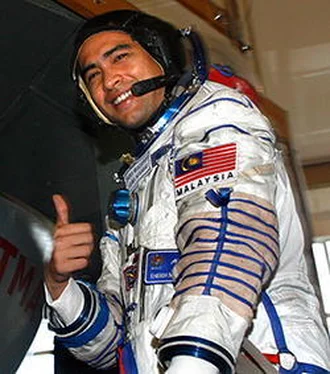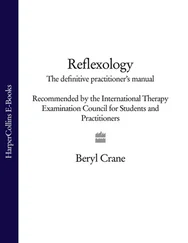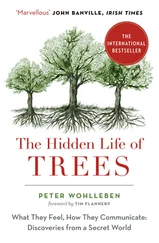A GUIDELINE OF PERFORMING IBADAH AT THE INTERNATIONAL SPACE STATION (ISS)

DEFINITIONS AND INTERPRETATION
a. Ibadah
Ibadah in this guideline include the way of istinja’ (washing-up or cleansing oneself from all the najas —filth (dirt/waste) from the private parts, i.e. after urination or defecation), determining the prayer time and the direction of Qibla (the direction faced when praying), praying, fasting, caring of the deceased and others.
b. Space
Refers to space beyond the atmosphere of the earth.
c. Al-Maqasid Al-Syariah
Prioritization in Islam in safeguarding the purity of the religion, mental, life, property and offspring of mankind.
d. Tayammum
Refers to the dry ablution in Islam using clean sand or dust, which may be performed in place of ablution, only if water is not readily available.
e. Halal
Refers to anything permissible under Islamic law, in contrast to haraam, which is forbidden.
f. Aurat
Refers to the part of the body that must be covered for the sake of basic decency under the Islamic law.
A Guideline of Performing Ibadah at International Space Station (ISS) is prepared by Department of Islamic Development Malaysia (JAKIM) as a reference for Muslim astronaut in performing ibadah at the ISS. With this guideline, Muslim astronaut is aspired to be focusing on their research at space and at the same time performing their obligations as a Muslim. Other than that, it also guide on how to fulfill the ‘ al-maqasid al-syariah ’ in any situation.
2.1 Issues on ‘Performing Ibadah in Space’ were being arisen in conjunction with the announcement from the government on Jun 2003, to send the first Malaysia’s astronaut to the ISS.
2.2 Since the possibility of sending a Muslim astronaut to the ISS was apparent, lots of opinions and suggestions have been proposed by academicians and others regarding the issue of performing ibadah in space (at the ISS).
2.3 Issues on how to do istinja’ (washing-up), determining prayer time and the direction of Qibla , performing solat (prayer), defining time of fasting, caring for the deceased, and others, have brought concern within the Muslim community.
2.4 In conjunction with that, ‘Seminar on Islam and Living in Space’ had been organized by the National Space Agency (ANGKASA) in collaboration with the Department of Islamic Development Malaysia (JAKIM) on 25–26 April 2006 for the purpose of identifying related issues in performing ibadah in space (in particular at ISS) based on Islamic perspective, and more importantly proposing solution on them.
3. PERFORMING IBADAH AT ISS
Performing ibadah at ISS includes:
3.1 Istinja’ (washing-up)
Istinja’ means cleaning of the private parts after relieving onself. Istinja’ is by using wipes/tissues which are available at the ISS.
Rules of making istinja’ :
i. Using pure, not sacred material
ii. Using a solid material
iii. Using a dry, non-slippery material
iv. Using not less than 3 pieces wipes/tissues
v. Before the najas (filth) dries
vi. Before the najas (filth) spreads
3.2 Cleansing Oneself
i. Cleansing from minor impurity (ablution)
Cleansing from minor impurity is by tayammum or dry ablution. This could be done by striking both palms of hands on a clean surface auch as wall or mirror of the ISS (even without dust).
ii. Cleansing from major impurity
Cleansing from major impurity is the same way as in 3.2 (i).
3.3 Determining the Direction of Qibla
Qibla direction is based on what is possible, prioritizing as below:
i. The Ka’aba
ii. The projection of Ka’aba
iii. The Earth
iv. Wherever
3.4 Determining the Prayer Time
The daily five prayer times is defined in a 24 hour duration (equals to 1 Earth day) following the time zone at which port the astronaut is launched (in this case, Baikonur, Kazakhstan).
3.5 Praying
i. Daily prayers could be performed in Jamak (combined) and Qasar (shortened), without the need to Qadha’ (compensate) the prayer.
ii. The performance of the physical postures (such as standing, bowing and prostrating) is to suit the conditions in ISS, prioritizing as follows:
a. If upright standing is not possible, then any standing posture,
b. Sitting. Bowing is by bringing down the chin closer to the knee or the prostrating place,
c. Lying down on the right side with body facing the direction of Qibla,
d. Lying flat
e. Using the eye lid as an indicator of the changing of postures in prayer,
f. Imagining the sequence of prayer.
3.6 Fasting
i. Fasting can be performed at the ISS or Qada’ (compensate) on the Earth (in the month of Ramadhan)
ii. The time of fasting according to the time zone of the location at which the astronaut is launched.
3.7 Caring of the Deceased
i. The deceased need to be brought back to Earth for normal funeral process.
ii. In the case the former is not possible; the deceased should be buried in space with a simple funeral process.
4.1 Food
If there is doubt on whether the food served on ISS it is halal or not, it is then permissible to eat the food on the basis of not to starve.
4.2 Dress code
A Muslim astronaut need to cover his aurat where:
a. Aurat for male is from the navel to the knee.
b. Aurat for female is the entire body except for her face and hands below the wrist.
4.3 Musafir (Traveling) ethic
i. According to Islam, traveling to space is encouraged.
ii. A Muslim astronaut needs to observe traveling ethics which are:
a. To maintain the relationship with Allah SWT
b. To observe peace with other beings
c. To maintain sustainability of the space environment.
It is the hoped that this guideline could assist the Muslim Astronaut to ensure the success of the mission and at the same time attaining the redha (pleasure) of Allah SWT.













